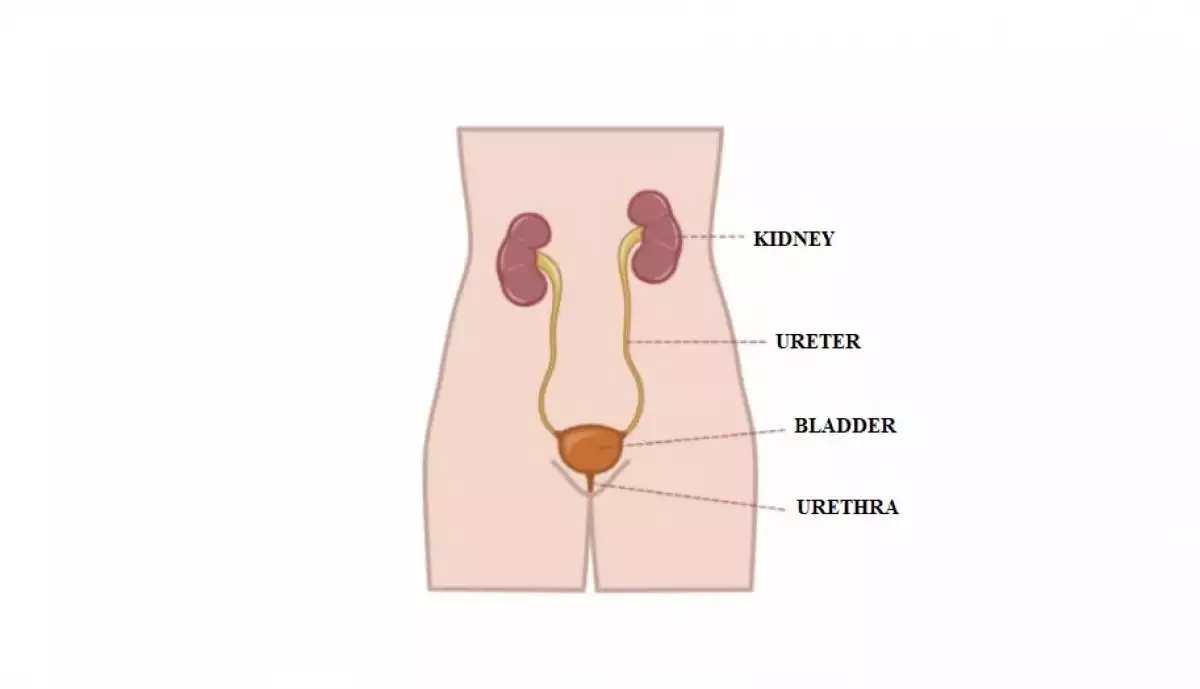
This is precisely what happens with the urinary tract infection; a widespread illness among the general population that can affect every organ in the urinary system. In this article, we are going to explain what urinary infection is, its symptoms, causes and possible treatments for it.
What is a Urinary Tract Infection?
The urinary tract infection (UTI) is a mycosis that can affect any organ in the urinary system: kidneys, bladder, tract or urethra. However, especially these last organs are the most affected by it.
Anyone can have this infection, regardless of their sex, women are almost twice as likely as men to develop this condition.
When the infection affects only the bladder, the symptoms can be painful and annoying, but they do not mean a risk for the person’s health. However, if the urinary infection is not treated, it can spread to the kidneys and bring severe consequences to the organs in the urinary system.
Luckily, if the person manages to detect the symptoms on time, the urinary tract infection is easily treatable by antibiotic medication.
Moreover, in those people that suffer from this infection regularly, there are effective ways to reduce the possibilities of having the infection or decreasing the intensity of the symptoms. Some examples of these ways are to keep oneself hydrated, taking food supplements with vitamin C or elaborated from blueberries.
Symptoms of a UTI
The urinary tract infection does not always show signs; when it is asymptomatic, there is a risk that the infection can spread to other organs before the affected person realizes.
Regarding the global symptomatology of this condition, it can cause the following symptoms:
- Intense and persistent urge to urinate
- Burning sensation when urinating
- Turbid urine
- Blood signs in the urine: reddish, pink or very dark urine
- Urine with a very strong smell
- In women, pelvic pain, in the center of the pelvis and around the area of the pubic bone
However, different kinds of UTI can cause more specific signs and symptoms depending on the affected organ in the urinary tract.

Urine is important to diagnose a urinary tract infection |
1. Acute pyelonephritis
Acute pyelonephritis is the most severe kind among all the types of urinary tract infection since the microorganisms that cause the infection have spread, reaching the kidney tissues, causing the following symptoms:
- Pain in the upper and lateral back area
- High fever
- Shivering and chills
- Nausea
- Vomiting
2. Cystitis (bladder infection)
Cystitis differs from other infections because it affects the bladder and has the following symptoms:
- Pelvic pressure
- Discomfort in the lower part of the abdomen
- Strong and painful urination
- Blood in the urine
3. Urethritis
Urethritis is the most common, mildest, and least symptomatic type of UTI. The two main ones are a strong urge to urinate and a burning sensation when urinating.
What causes a UTI?
Urinary tract infections are usually caused by the invasion of certain types of bacteria that enter the urinary tract through the urethra and then multiply and spread to the bladder area.
Although the urinary system is designed to prevent infections from contagious pathogens, under certain circumstances, these defenses can fail. If this happens, the bacteria can grow and lead to a urinary tract infection.
In the urethra infection or urethritis, the most probable cause for the urinary infection is the bacterium known as E. coli (Escherichia coli), a type of bacterium that is usually found in the gastrointestinal tract. These bacteria spread from the anus to the urethra.
Whereas in cystitis (or bladder infection) the bacteria that come in through the urethra spread up to the bladder, causing more severe and annoying symptoms.
While sexual intercourse can increase the risk of cystitis, this infection can occur for different reasons.
Also, the explanation that the women are twice as prone to have this illness is that, in contrast to men, in women, there is a short distance between the urethra and the anus and from the opening of the urethra to the bladder.
Risk factors
Apart from the causes of a urinary tract infection, some risk factors make it easier for this condition to appear, or for it to occur regularly. The risk factors for urinary infections include:
- Feminine anatomy
- Sexual intercourse
- Some contraceptive methods such as diaphragms or products with spermicidal agents
- Menopause
- Urinary tract anomalies
- Blockages in the urinary tract
- Immune system problems
- Use of a catheter
- Urinary surgery
UTI treatment
Generally, antibiotic medication is the first-line treatment for the different types of urinary tract infections. The kind of specific drugs and the duration of the treatment may vary depending on the type of infection and the severity of the symptoms.
This kind of infection is usually treated with different types of antibiotics accompanied by analgesics and hormone therapy with estrogen. The latter option is chosen especially in the case of postmenopausal women.
UTIs can be very painful, but there are ways to alleviate the discomfort and prevent the infection to appear again. In cases in which someone has this infection recurrently, these remedies are recommended:
- Drink a lot of water to dilute the urine and eliminate bacteria
- Avoid drinks that can irritate the bladder such as coffee, alcohol or soft drinks
- Place a hot water bottle, a cushion, or a heating pad over your abdomen to minimize discomfort and localized bladder pain.
References
Takhar, S. S. (2014). Diagnosis and management of urinary tract infection in the emergency department and outpatient settings. Infectious Disease Clinics of North America, 28:33.
